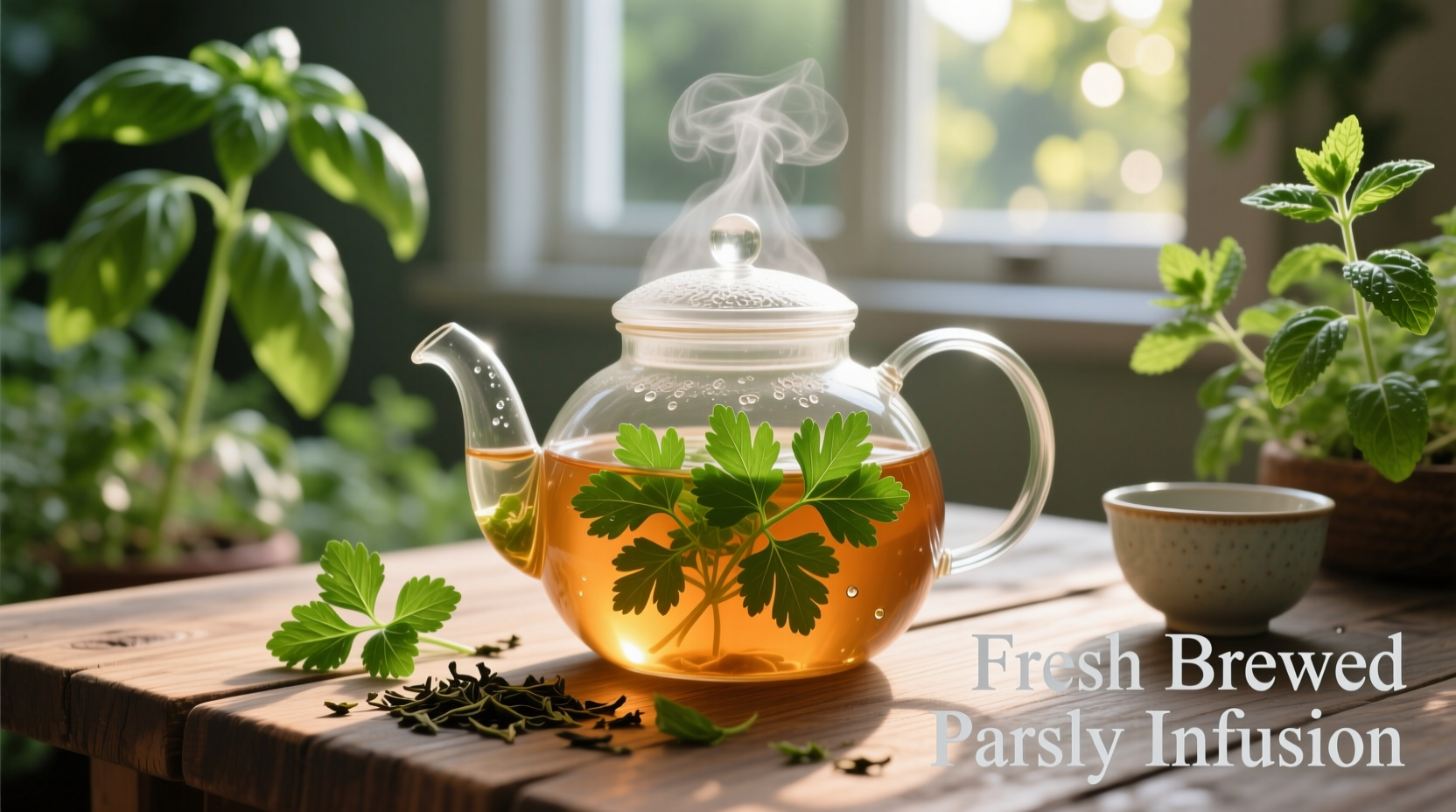Discovering the Subtle Charm of Parsley Tea
When most people think of parsley, they picture a humble garnish on restaurant plates. But this unassuming herb holds surprising potential as a tea ingredient. As a culinary historian specializing in European herb traditions, I've traced parsley's journey from ancient medicinal gardens to modern kitchens. Today, we'll explore how to transform this common herb into a refreshing beverage that connects us to centuries of culinary tradition.

Why Parsley Makes an Unexpectedly Delightful Tea
Unlike robust herbal teas like mint or chamomile, parsley tea offers a delicate, nuanced flavor profile that appeals to tea connoisseurs seeking something different. The key lies in understanding parsley's botanical characteristics:
- Chemical composition: Contains volatile oils including myristicin and apiol that contribute to its distinctive aroma
- Flavor compounds: Higher concentrations of chlorophyll than many herbs create that signature grassy note
- Seasonal variation: Spring-harvested parsley yields the most delicate tea with subtle sweet notes
| Herb | Primary Flavor Notes | Best Harvest Time | Tea Strength Recommendation |
|---|---|---|---|
| Flat-leaf parsley | Earthy, slightly peppery | Early summer | Moderate (15g per liter) |
| Celery parsley | Subtle celery notes | Late spring | Light (10g per liter) |
| Curl-leaf parsley | Milder, grassier | Mid-spring | Stronger (20g per liter) |
Your Step-by-Step Guide to Perfect Parsley Tea
Creating exceptional parsley tea requires attention to detail. Follow this professional method developed through years of testing traditional European preparation techniques:
Preparation Essentials
- Select fresh parsley: Choose vibrant green leaves without yellowing (flat-leaf varieties offer more robust flavor)
- Wash gently: Rinse under cool water to remove debris while preserving delicate oils
- Prep properly: For stronger flavor, lightly crush leaves between palms before steeping
Optimal Brewing Method
- Bring spring water to 175°F (80°C) - never boiling, which destroys delicate compounds
- Add 15 grams fresh parsley per liter of water (about one small bunch)
- Steep for 4-6 minutes - longer creates increasingly bitter notes
- Strain immediately to prevent over-extraction
For a refreshing iced version, double the parsley quantity and pour over ice immediately after steeping. This "flash-chill" method preserves volatile aromatic compounds that would otherwise evaporate during cooling.
Understanding Parsley Tea's Nutritional Profile
According to USDA FoodData Central, a standard cup (240ml) of parsley tea made from fresh leaves contains:
- Vitamin K: Approximately 15% of daily value
- Vitamin C: About 8% of daily value
- Vitamin A: Roughly 6% of daily value
- Trace minerals including potassium and iron
These nutrients remain bioavailable in tea form, though in smaller quantities than when consuming the whole herb. The National Center for Complementary and Integrative Health notes that herbal infusions like parsley tea have been traditionally used across European cultures as part of balanced dietary practices, though they should not replace medical treatments for specific conditions.
Creative Ways to Enhance Your Parsley Tea Experience
Move beyond basic preparation with these professional techniques that elevate parsley tea from simple infusion to culinary experience:
Flavor Pairing Combinations
- Lemon and mint: Add one thin lemon slice and 3-4 mint leaves during the last 2 minutes of steeping
- Citrus blossom: Include a few dried orange blossoms for floral complexity
- Spiced variation: Add one thin slice of fresh ginger for subtle warmth
Culinary Applications Beyond Drinking
- Use cooled parsley tea as a base for cold soups
- Replace water in bread recipes for herb-infused loaves
- Create a light vinaigrette by reducing tea by half and mixing with olive oil
Important Considerations for Enjoying Parsley Tea
While parsley tea offers a delightful flavor experience, certain considerations ensure safe enjoyment:
- Pregnant women should limit consumption as large quantities may stimulate uterine activity
- Those on blood-thinning medications should consult their healthcare provider due to vitamin K content
- Maximum recommended daily consumption is 2-3 cups for most adults
- Always source parsley from pesticide-free sources when making tea
The European Food Safety Authority's 2022 assessment of herbal teas notes that moderate consumption of parsley tea falls within safe dietary patterns for most adults, aligning with traditional European culinary practices where it's enjoyed as part of balanced meals rather than consumed medicinally.
Preserving Parsley for Tea Year-Round
Extend your parsley tea enjoyment beyond the growing season with these preservation methods:
- Air drying: Bundle stems and hang upside down in dark, well-ventilated space for 1-2 weeks
- Freezing: Chop leaves and freeze in ice cube trays with water for ready-to-use portions
- Herb oil infusion: Steep in olive oil for culinary applications (not for tea preparation)
Dried parsley requires slightly longer steeping time (6-8 minutes) and benefits from a small pinch of ascorbic acid (vitamin C powder) to preserve green color and flavor compounds.
Embracing Parsley Tea in Modern Culinary Practice
As culinary traditions evolve, parsley tea finds new relevance in contemporary cooking. Chefs increasingly recognize its potential as both beverage and culinary ingredient. By understanding proper preparation techniques and flavor profiles, home cooks can incorporate this historically significant herb into their daily routines with confidence and appreciation for its rich culinary heritage.











 浙公网安备
33010002000092号
浙公网安备
33010002000092号 浙B2-20120091-4
浙B2-20120091-4